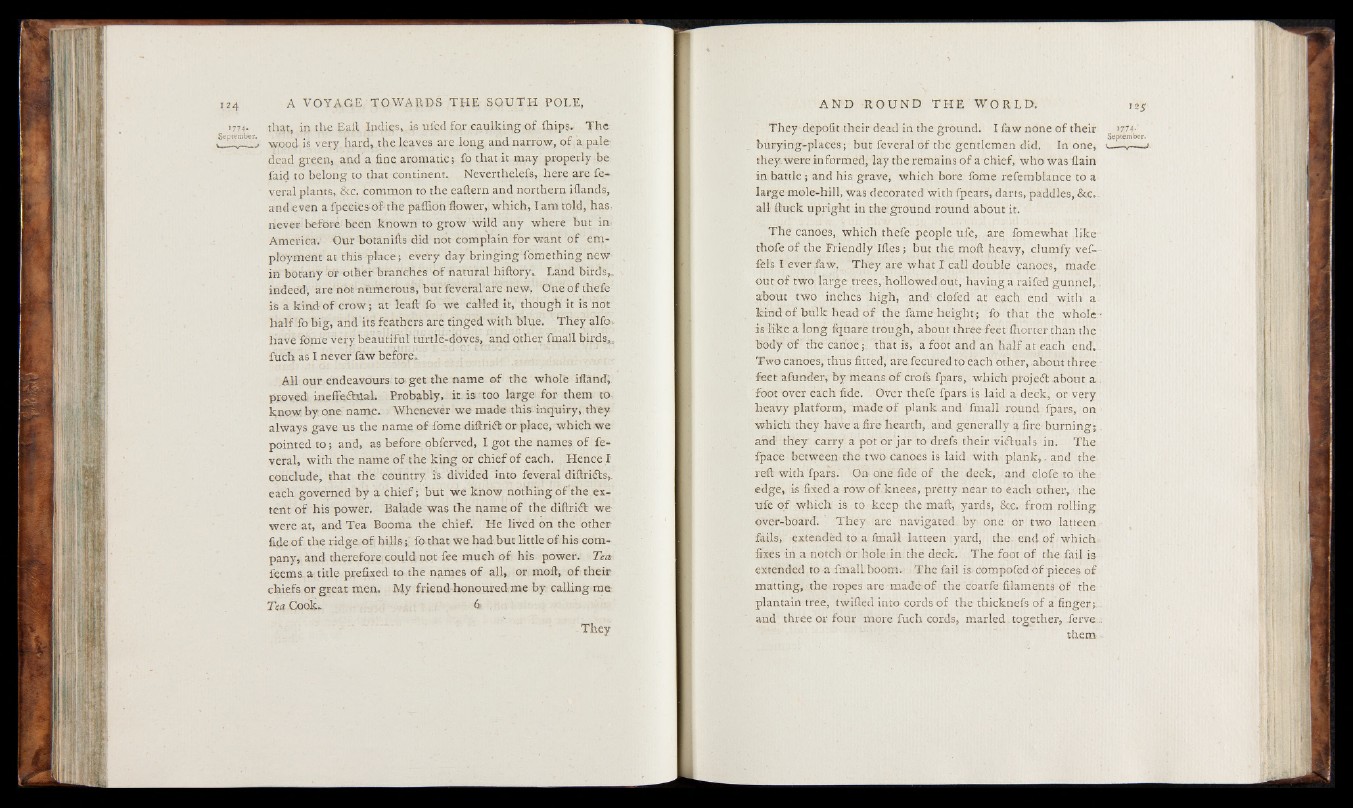
1 7 74. that, in tire Eaft Indies, is tiled for caulking of {hips. The
jg very hard, the leaves are long and narrow, of a pale
dead green, and a fine aromatic; fo that it may properly be
faid to belong to that continent. Neverthelefs, here are fe-
veral plants, &c. common to the eaftern and northern iflands,
and even a fpeeies of the paffion flower, which, I am told, has,
never before been known to grow wild any where but in,
America. Our botanifts did not complain for want of employment
at this place; every day bringing fomething new
in botany or other branches of natural hiftory. Land birds,,
indeed, are not numerous, but feveral are new, One of thefe
is a kind o f crow; at leaft fo we called it, though it is not
half fo big, and its feathers are tinged with blue. They alfo,
have feme very beautiful turtle-doves, and other fmall birds,,
fuch as I never faw before*
All our endeavours to, get the name of the whole iftand;
proved ineffectual. Probably, it is too large for them to
know by-one name. Whenever we made this inquiry, they
always gave us the name o f feme diftrift or place, which we
pointed to; and, as before obferved, I got the names of feveral,
with the name o f the king or chief of each. Hence [I
conclude, that the country is divided into feveral diftridts,.
each governed by a chief; but we know nothing of'the extent
of his power. Balade was the name of the diftrift we
were at, and Tea Booma the chief. He lived on the other
fide of the ridge of hills; fo that we had but little o f his company,
and therefore could not fee much of his power. Tea
feems a title prefixed to the names of all,, or moft, o f their
chiefs or great men. My friend honoured me by calling met
Tea Cook. 6
They
They depofit their dead in the ground. I faw none o f their
burying-places; but feveral of the gentlemen did. In one,
they.were informed, lay the remains o f a chief, who was {lain
in battle; and his grave, which bore fome refemblance to a
large mole-hill, was decorated with fpears, darts, paddles, &c.
all ftuck upright in the ground round about it.
The canoes, which thefe people ufe, are fomewhat like
thofe of the Friendly Iffes ; but the moft heavy, clumfy vef-
ffils I ever faw. They are what I call double canoes, made
out of two large trees, hollowed out, having a raifed gunnel,
about two inches high, and clofed at each end with a
kind o f bulk head of the fame height-; fo that the whole •
is like a long fquare trough, about three feet Ihorter than the
body of the canoe; that is, a foot and an half at each end.
Two canoes, thus fitted, are fecured to each other, about three
feet afunder, by means of crofs fpars, which project about a .
foot over each fide. Over thefe fpars is laid a deck, or very
heavy platform, made of plank and fmall round fpars, on
which they have a fire hearth, and generally a fire burning; ,
and they carry a pot or jar to drefs their victuals-in. The
fpace between the- two canoes is laid with plank,. and the
reft with fpars. On one fide of the deck, and clofe to the
edge, is fixed a row o f knees, pretty near to each other, the
Ufe of which is to keep the mail, yards, &c. from rolling
over-board. They are navigated by one or two latteen
fails, extended to a fmall latteen yard, the. end of which
fixes in a notch or hole in the deck. The foot of the fail is
extended to a fmall boom. The fail is compofed o f pieces of
matting, the ropes are made of the coarfe filaments of the
plantain tree, twifted into cords of the thicknefs of a finger;
and three or four more fuch cords, marled together, ierve .:
them